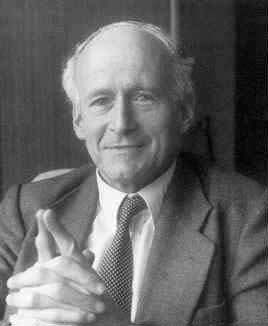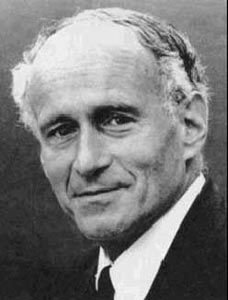<Back to Index>
- Mathematician Laurent-Moïse Schwartz, 1915
- Painter Giovanni Battista Tiepolo, 1696
- Prime Minister of Spain Felipe González Márquez, 1942


Laurent-Moïse Schwartz (5 March 1915, Paris – 4 July 2002, Paris) was a French mathematician. Alumnus of the École normale supérieure, he was awarded the Fields medal in 1950 for his works on the theory of distributions, which gives a well-defined meaning to objects such as the Dirac delta function. For a long time he taught at the École polytechnique. Apart from his scientific work, he was a well-known outspoken intellectual, leaning towards socialism. Laurent Schwartz comes from a Jewish family of Alsatian origin, with a strong scientific background: his father is a well-known surgeon, his uncle Robert Debré (who contributed to the creation of UNICEF) is a famous pediatrician, and his great-uncle-in-law, Jacques Hadamard, is a famous mathematician. During his training at Lycée Louis-le-Grand to enter the École normale supérieure, he fell in love with Marie-Hélène Lévy, daughter of the probabilist Paul Lévy who was then teaching at École polytechnique.
Later they would have two children, Marc André and Claudine.
Marie-Hélène was a gifted mathematician as well, as she
contributed to the geometry of singular analytic spaces and taught at
the University of Lille. Laurent's mother transmitted her interest in natural sciences, especially entomology. Laurent collected more than 20,000 Lepidoptera (now housed in the National Museum of Natural History and other museums). He even discovered several new species, now named after him. According
to his teachers, Laurent Schwartz was an exceptional student. He was
particularly gifted in Latin, Greek and mathematics. In 1934, he was admitted at the École normale supérieure, and in 1937 he obtained the agrégation (with rank 2).
As a man of Trotskyist affinities and Jewish descent, life was difficult for Laurent Schwartz during World War II. He had to hide and change his identity to avoid being deported. He worked for the University of Strasbourg (which had been relocated in Clermont-Ferrand because
of the war) under the name of Laurent-Marie Sélimartin, while
Marie-Hélène used the name Lengé instead of
Lévy. Contrary to other mathematicians at Clermont-Ferrand such
as Feldbau, the couple managed to escape the Nazis. Laurent Schwartz taught mainly at École Polytechnique, from 1958 to 1980. At the end of the war, he spent one year in Grenoble (1944), then in 1945 joined the University of Nancy on the advice of Jean Delsarte and Jean Dieudonné, where he spent seven years. He was both an influential researcher and teacher, with students such as Bernard Malgrange, Jacques-Louis Lions, François Bruhat and Alexander Grothendieck. He joined the science faculty of the University of Paris in 1952. In 1958 he became a teacher at the École polytechnique after
having at first rejected this position. However, from 1961 to 1963 the
École polytechnique refused him the right to teach, because of
his having signed the Manifesto of the 121 about the Algerian war,
a gesture not appreciated by Polytechnique's military administration.
However, Schwartz had a lasting influence on mathematics at the
École polytechnique, having reorganized both teaching and
research there. In 1973 he was elected corresponding member of the French Academy of Sciences, and was promoted to full membership in 1975.